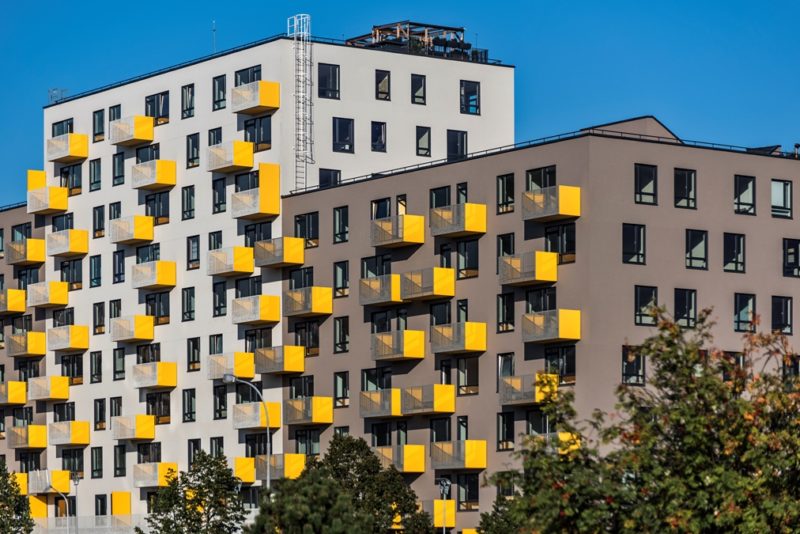
Colour is in vogue in lieu of recent research into colour psychology. Ben Warren, managing director at Baumit, provides five points to illustrate how and why businesses can inject colour into a building’s exterior in order to enhance and reflect their identity
A colour scheme not only has to complement the space; colour choice is crucial to the people or business inhabiting the area. Whether businesses are selecting their own colours, or have a designer specifying a particular scheme, colour is still an important consideration.
The following five points illustrate how businesses can make colour work for their spaces:
1) Signify business identity
As first encounters are inherently based on visual appearance, colour can be the distinguishing aspect of a business.
Although there is a huge weight on the importance of colour, it is important to not feel intimidated by this process. Choosing the colour or colour scheme which reflects an organisation’s ethos is not an easy task, especially when it is designed to complement a business’s identity. Whilst it takes time to determine a colour scheme, it can be a rewarding process which allows businesses to really get to grips with who they are and what they do.
2) Market business identity
Every colour has the capability to leave a lasting impression. Although it is important to select attractive colours, it is also worthwhile to use colour to market business identity. A clear, consistent identity speaks volumes on the aims, objectives and approaches of a business. Unclear and random colours set a confusing image for a business’s brand.

3) Keep employees happy
One of the misconceptions about colour is that it only affects mood; in fact, colours shape our physical, emotional and mental state. Typically, blue is known for its stillness and its ability to affect our frame of mind. However, different tones of blue have different meanings. For instance, a light blue will calm the mind and create the feeling of stillness, whereas a more saturated blue would stimulate the mind.
If businesses want to utilise colours to increase employee wellbeing and productivity they need to: assess the tasks of the employees, how long they spend in the space and what they
want to achieve in that space. Does the employee’s job require a calming environment or a
stimulating one? If they are dealing with difficult phone calls all day, perhaps a lighter, calming blue would suit the environment, but if they are focusing on mundane tasks for long periods a brighter blue might be preferable. For instance, an office space would be designed differently to a canteen if the required outcome was different.
Happy employees say a lot about the business it is representing and having spaces that suit the requirements, whether within interiors or on exterior façades, makes a clear statement about a company’s relationship with its employees.
4) Get support and invest time
Selecting a provider who is an expert in colour technology is a crucial requirement.
Injecting colour into a building which houses your business is a bold move. But, gaining the support of a provider who understands the technology and theory behind colour choice is a worthwhile investment.
Take time to select the perfect colour. Businesses invest time and money developing and honing their strategies, and the same should apply when it comes to considering colour schemes.
5) Follow the 60–30–10 rule
This ratio is a well-known tool created by designers which businesses can choose to use or not. It just depends on whether some organisations require the added support. To ensure a colour scheme looks balanced and calculated, this 60–30–10 proportion is a useful device. It ensures that the colours are not out of place, nor are they random.
Finding the right colours to complement a business’s identity can be a challenge. However, with the right amount of research, consideration and support, colour can be the defining aspect of a business. Whilst some might choose to go green to reinforce their focus on employee wellbeing, others might stay with more modest tones, such as whites and greys, and introduce a blue or yellow into the mix.
Every business is different and that is why colour is a great option – it showcases individuality. Take time to find the right colours for your business and see what differences they make.











